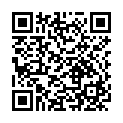1. What are the distinguishing features of your organization?
One of Kobe University’s philosophies is to function as “a hub campus for top global talent” and to produce “individuals that will take leading roles in solving global issues,” and the school has worked to further its exchanges with overseas universities and research institutes. Yet, in this era of globalization, there is ever-increasing competition among universities surrounding information, standards, and talent—and to cope with this competition, we need even more proactive interaction among our universities. At Kobe University, around 80% of our overseas visiting students are from Asian countries, and around half of the schools with which we have agreements are also universities in the Asian region. This makes our exchanges with universities and research institutions in Asian countries particularly important.
The Center for Asian Academic Collaboration (CAAC) at Kobe University’s Institute for Promoting International Partnerships was established in 2013 as a university-wide organization to respond to changing times, and strategically promote exchanges of talent and learning with Asian universities. The CAAC is working to build multifaceted, collaborative relationships to utilize our strength as a school specializing in both arts and sciences to promote academic exchanges with Asian universities that also combine the arts and sciences. One example is the Forum for Leaders of Japanese Studies, hosted by the CAAC, which invites renowned Japanese studies researchers from throughout Asia to visit Kobe University, both to facilitate networking and to spread the results of their research globally. Through the Kobe University Academic Research and Education Forum (KUAREF), we are also working with our network of overseas alumni to enable comprehensive academic exchanges that surpass the divisions between the arts, humanities, and sciences, even in regions that had previously seen little engagement from Japanese universities including our own school.
In terms of education, in addition to collaborating with Asian universities to develop double-degree programs with clear objectives, we are expanding our internship programs in collaboration with our partners, and are working to foster the next generation of talent to lead symbiotic coexistence across Asia.
At the core of the philosophy behind these activities at the CAAC is research and education for solving global issues, and our cooperation with schools across Asia is founded on this principle. Asia is diverse in many regards—economic development, political systems, culture, and so forth—and for that reason it is not easy to gather together shared ideas about particular issues. Yet this also means that, faced with issues that may seem impossible to solve in one nation, we are able to benefit from a variety of suggestions based on the different experiences of other nations. Here at the CAAC, we hope to promote exchanges of talent, resources, and knowledge to make the most of fresh ideas created by the diversity found across Asia.
2. What kinds of researches related to the three countries have been conducted in your organization? Please introduce your previous and current research.
Kobe University conducts academic study and student exchanges related to China and the ROK across the various fields of the natural sciences, human sciences, and social sciences. The Collective Action for Mobility Program of University Students in Asia (Campus Asia Program), a project for university exchanges among the three countries, is one of the initiatives supported by the CAAC at the university-wide level.
Behind these efforts are our experiences from the Great Tōhoku Earthquake in 2011. This unprecedented large-scale disaster taught us that, as typified by the accident at the Fukushima Daiichi Nuclear Plant, natural disaster damage in one country may have subsequent effects on neighboring countries, and also that cooperation across broad regions becomes necessary to control these effects. Of course, the same may be said for issues surrounding politics or the economy. Pressing concerns, such as North Korea’s nuclear and missile development, and issues surrounding differing perceptions of history are tied to the variety of global connections surrounding the region, and they can sometimes influence us in unexpected ways. The Campus Asia Program joins together three schools—Korea University in the ROK, Fudan University in China, and Kobe University—and aims to foster experts who can propose policy, and analyze issues in the East Asia region from risk-based perspectives. Students participating in the program will obtain credits and degrees from both their home and host institutions, and will cultivate expertise and global skills to help them be proactive as global talent.
In order to achieve these aims, our school challenged program participants with the issue of how to address the various risks in the Northeast Asian region, and conducted training and research unfettered by any division between the social and natural sciences. So that participants’ research efforts may actually be put to use in society, the three schools also provide support with a variety of internships and fieldwork. Graduates of the program are active on the global stage, finding employment in international bodies and developmental assistance agencies, as well as in private companies dealing with international risk management.
The program has already entered its sixth year, having gone through a pilot period of five years. From now on, the three schools intend to continue to look at the program’s progress towards the initial goal of “promoting cooperative relations and mutual understanding between schools, as well as building up competition among universities, and cultivating Asia’s next generation of outstanding talent,” and to conduct joint research to contribute to promoting future trilateral cooperation. Any knowledge acquired will be shared not only across the academic world, but also with institutions of international cooperation, such as the Trilateral Cooperation Secretariat (TCS), which we hope will help to further strengthen cooperation among the three nations.
3. What is your future prospect for trilateral cooperation and what kind of research should be done to that end? Also, what kind of role the Trilateral Cooperation Secretariat (TCS) can play for this purpose?
Today, the three countries cooperate in an extremely wide variety of fields, from security through economic partnerships and cultural exchanges. Yet if we consider whether or not this cooperation is known by general society—it is not. The content passed on by mass-media channels often focuses on friction among the three countries, and at present there is a growing impression that further cooperation will be difficult.
One of the causes of this situation is the performance of each country’s government in foreign diplomacy. One great problem in particular may be that the Trilateral Summit, which promotes cooperation among the three countries, is not held regularly because of the influence of stagnant bilateral relations between Japan and China, Japan and the ROK, and the ROK and China. Yet an even greater problem lies behind this: differences in stances on security and political systems, and nationalism in each nation introduce limitations—trilateral cooperation and its outcomes are not visible to the citizens in each country.
Providing visible results is also important when considering popular sentiment toward each other among the three countries, which shows no sign of improvement. For instance, there is the idea that a prerequisite of trilateral cooperation is the building of mutual trust through a variety of channels. Yet suddenly building mutual relations of trust among the three nations, which all have different political, economic, cultural, and even historical backgrounds, is no easy task. To begin with, this trust is often far from anything concrete, and its goals are unclear.
As with interpersonal relations, concrete results from actions are also a prerequisite of trust in international relations. Put differently, we can begin earning mutual trust by attaining concrete results of cooperation—and indeed it is these results that will enable us to help citizens to understand trust in cooperation, and the significance thereof.
This makes it ever more important to first make concrete efforts and produce results successively, and to also then explain these results to the public in a clear manner. We therefore need specific ideas free from abstract terms, with clear role divisions, and, subsequently, clear, easily understood results.
Let us consider the nuclear issue surrounding North Korea as an example. This is currently an extremely important issue in Northeast Asia, and Japan, China, and the ROK are all seeking solutions. Yet, looking at the policies of each nation for addressing the issue, at present each national government is building policy in an isolated manner, and there is almost no concrete interaction before arriving at their respective policy decisions. This is an issue that should have presented an opportunity for cooperation among the three countries, but the resulting circumstances now only give rise to suspicion about each other’s policies—and certainly not greater cooperation.
What is lacking here is mutual understanding of each nation’s policy determination processes, and a complementary distribution of roles resulting from such mutual understanding. The same thing can be said about economic aid to developing countries, for instance, in Africa. The current aid policies of the three countries are competitive rather than cooperative, and as a result there is overlapping aid directed toward the same recipients. Smooth mutual communication should enable avoidance of such issues, and by avoiding these issues, it should be possible to make seamless use of limited resources and produce greater results.
In some way, the role of the TCS in trilateral cooperation is similar to the role of the CAAC in exchanges between schools. The Center for Asian Academic Collaboration at Kobe University, in spite of its small size, is looking for possible forms of exchange while also acknowledging the differences between our school, and the universities and research institutions of other Asian countries. What is important here is the gathering and conveying information to facilitate mutual understanding, and also the exchanging information about each partner’s strategy. As university faculties and research departments with great resources build their respective strategies for education and research, what lies at the core of our interchanges is the question of how to make this information known to others, and how to create networks of exchange.
KIMURA Kan KIMURA Kan is professor of Graduate School of International Cooperation Studies, Kobe University (Comparative Politics and Korean Peninsula Area Studies). In 1993, he left his studies at the Kyoto University’s Graduate School of Law. He later obtained his doctorate from the same school in 2001. After working as an assistant and a lecturer at Ehime University’s Faculty of Law and Letters, and as an associate professor at Kobe University’s Graduate School of International Cooperation Studies, he became a professor at Kobe University in 2005. His main publications include “Korean Nationalism as a ‘Small Nation’” (2000); and “Historical Disputes between Japan and South Korea” (2014). |
| |


